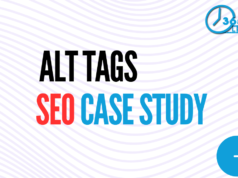Difference Between Google Ads and DV360 – Introduction
In the digital advertising world, Google offers two powerful platforms that might seem similar at first glance but serve very distinct purposes for marketers and advertisers. These are Google Ads (formerly Google AdWords) and Display & Video 360 (DV360). Understanding the difference between these two platforms is crucial for anyone looking to dive into online advertising. This article aims to demystify DV360 and Google Ads, breaking down their functionalities, strengths, and best use cases with simple explanations and practical examples. Whether you’re a small business owner, a marketing professional, or just curious about digital advertising, this guide will help you understand these platforms better and make informed decisions about where to invest your advertising budget.
Table of Contents
Understanding Google Ads
What is Google Ads?
Google Ads, previously known as Google AdWords, is a comprehensive online advertising platform that allows businesses and marketers to display ads across Google’s vast network. This network includes the Google Search Engine, where ads can appear alongside search results, and the Google Display Network, which encompasses millions of websites, videos, and apps where your ads can show. Google Ads operates primarily on a pay-per-click (PPC) model, meaning advertisers pay each time a user clicks on their ads.
Key Features of Google Ads
- Keyword-Based Advertising: At the heart of Google Ads is the ability to target specific keywords. This means your ads are shown to users who are actively searching for products or services like yours, making the traffic you receive highly relevant.
- Ad Extensions: Google Ads allows the use of extensions, providing additional information and links directly in your ads. This can include contact information, additional webpage links, or even product pricing.
- Local Advertising: For businesses targeting local customers, Google Ads offers features like local search ads that appear on Google Maps and in search results, highlighting businesses in the area of the searcher.
- Remarketing: This feature lets you target users who have previously visited your website with tailored ads across the internet and as they search on Google, increasing the likelihood of conversion.
When to Use Google Ads
- Quick Results: If you’re looking for a platform that can give you immediate visibility in search engines, Google Ads is an excellent choice. It’s ideal for launching time-sensitive campaigns or promotions.
- Targeted Local Advertising: Businesses looking to attract local customers will find Google Ads particularly beneficial, especially with its integration with Google Maps.
- Budget Flexibility: Google Ads allows you to control your advertising costs closely, with options to set daily budgets and bids for specific keywords.
Exploring Display & Video 360 (DV360)
What is DV360?
Display & Video 360 (DV360) is part of Google’s marketing platform, designed for businesses and marketing agencies looking for advanced features to manage their online advertising campaigns. Unlike Google Ads, DV360 is not limited to Google’s own inventory; it allows advertisers to purchase ad space across a multitude of websites and apps through real-time bidding. DV360 integrates various advertising technologies into a single platform, offering a unified tool for planning, organizing, and executing digital media campaigns across multiple channels.
Key Features of DV360
- Programmatic Ad Buying: DV360 enables advertisers to automate the purchase of digital ads in real-time, allowing for more efficient spending and targeting.
- Cross-Channel Advertising: With DV360, you can manage ads across display, video, TV, audio, and other channels, all from one platform. This cross-channel capability ensures a consistent advertising experience for your audience.
- Advanced Audience Targeting: DV360 offers sophisticated targeting options, including the ability to create custom audience segments based on user behavior, interests, and demographics.
- Detailed Reporting and Insights: The platform provides comprehensive analytics and reporting tools, giving advertisers deep insights into campaign performance and the ability to adjust strategies on the fly.
When to Use DV360
- Complex Advertising Campaigns: DV360 is ideal for large-scale advertisers or agencies managing campaigns across various channels and needing detailed control over every aspect of their advertising.
- Advanced Targeting Needs: If your advertising strategy requires intricate targeting options, including retargeting and custom audience segments, DV360’s capabilities surpass those of Google Ads.
- Access to Premium Ad Inventory: DV360 offers access to high-quality ad inventory not available on Google Ads, including premium websites and digital properties.
Now that we have a basic understanding of both Google Ads and DV360, let’s delve into the core differences between them to help you decide which platform suits your advertising needs better.
Difference Between Google Ads and DV360
Understanding the differences between DV360 and Google Ads is crucial for selecting the right platform for your digital advertising needs. While both are powerful tools in Google’s advertising arsenal, they serve different purposes and offer unique features. Here’s a comprehensive comparison:
Audience Targeting
- Google Ads primarily focuses on keyword targeting, allowing advertisers to show their ads based on the specific terms users are searching for on Google. It also offers demographic and location-based targeting, making it suitable for businesses aiming at a broad audience with specific interests or in certain locations.
- DV360 excels in advanced audience targeting options. It enables advertisers to use first-party data (like email lists) and third-party data to create detailed audience segments. This level of granularity allows for more personalized and efficient campaigns, particularly useful for advertisers with specific target audiences.
Ad Formats and Creatives
- Google Ads offers a variety of ad formats, including search ads, display ads, and video ads on YouTube. It provides a solid foundation for businesses wanting to reach customers on Google’s search engine and partner websites.
- DV360 goes a step further by offering additional creative formats and richer media options, such as interactive ads and immersive display formats. This platform is designed for advertisers seeking to create more engaging and visually appealing ads across a wider array of channels.
Campaign Management and Optimization
- Google Ads provides tools for campaign management and optimization that are accessible to beginners and small businesses. Its interface is user-friendly, with automated options like Smart Bidding to help maximize the return on investment.
- DV360 offers a more complex set of tools for campaign management, including detailed optimization strategies and the ability to adjust bids in real-time based on advanced algorithms. It’s geared towards advertisers and agencies requiring in-depth campaign control and analytics.
Reporting and Analytics
- Google Ads offers comprehensive reporting features that cater to the needs of most advertisers, including insights into clicks, impressions, and conversions. It integrates well with Google Analytics, providing a clear view of how ads contribute to overall website traffic and goals.
- DV360 provides more detailed reporting and analytics, with the ability to drill down into granular data about audience segments, creative performance, and cross-channel impact. This makes DV360 ideal for campaigns where detailed performance analysis and insights are critical.
Practical Examples
To illustrate how these differences play out in real-world scenarios, let’s consider two examples:
Example Scenario Using Google Ads
A local pizza restaurant wants to attract more customers in its city. It decides to use Google Ads to target people searching for “pizza delivery near me” and “best pizza in [City Name].” Using Google Ads, the restaurant sets up search ads with extensions showing its menu, special offers, and contact information. This approach allows the restaurant to quickly attract local customers looking for pizza.
Example Scenario Using DV360
A national fashion retailer is launching a new clothing line and wants to create a buzz across multiple channels. The retailer uses DV360 to target fashion enthusiasts across display, video, social media, and premium fashion websites. By leveraging DV360’s advanced audience targeting, the retailer creates custom audience segments based on previous purchasing behavior and interests. The campaign includes interactive ads that allow users to view the clothing line in a virtual dressing room, significantly increasing engagement and brand recall.
Choosing the Right Platform for Your Needs
Selecting between Google Ads and DV360 depends on several factors, including your advertising goals, budget, target audience, and desired level of campaign complexity. Small to medium-sized businesses looking for direct response advertising with straightforward management might find Google Ads more suitable. In contrast, large enterprises or specialized agencies requiring extensive targeting capabilities, access to premium ad inventory, and detailed reporting might prefer DV360.
Conclusion
The digital advertising space is full of endless possibilities. Google Ads and Display & Video 360 (DV360) are two platforms that you can use to make the most out of your ad campaigns. They might sound similar, but they’re designed for different purposes.
Google Ads is user-friendly, diverse and it’s perfect for any business size, from small shops to big corporations. If you want to reach potential customers when they’re searching for something specific, this platform will help you achieve that goal.
DV360 is a more advanced tool with a wider scope in terms of format and analytics. It digs deeper into data across many channels, making it ideal for complex ad campaigns that cover multiple fronts.
The decision between Google Ads and DV360 ultimately comes down to what you hope to accomplish with your marketing efforts. Direct responses benefit from Google Ads’ simplicity while larger enterprises and creative agencies will find DV360’s tools useful in their quest to build brand awareness.
By realizing the strong suits each platform has to offer, business owners can better allocate their resources where it matters most – maximizing return on investments while reaching target audiences effectively.
FAQs
Q: Can small businesses benefit from using DV360?
A: While DV360 is designed for larger advertisers with complex needs, small businesses with sufficient budgets and a need for advanced targeting or access to premium ad inventory might also find it beneficial. However, the complexity and cost may not be justified for all small businesses.
Q: Is it possible to use Google Ads and DV360 together?
A: Yes, many advertisers use both platforms in tandem to maximize their reach and effectiveness. For example, they might use Google Ads for direct response campaigns and DV360 for broader brand awareness campaigns.
Q: How do I decide between Google Ads and DV360?
A: Consider your campaign goals, budget, target audience, and desired ad formats. If you’re looking for straightforward campaign management and targeting users with specific intent, Google Ads is likely the better choice. If you need advanced targeting options, access to a wide range of ad formats, and comprehensive analytics, DV360 might be more appropriate.
Q: Can I switch from Google Ads to DV360 if my needs change?
A: Absolutely. Many businesses start with Google Ads and transition to DV360 as their advertising needs evolve or as they seek more sophisticated targeting and reporting capabilities. It’s essential to continually assess your advertising strategies and platforms to ensure they align with your business goals.
Key Takeaways
- Platform Purpose: Google Ads is designed for businesses of all sizes aiming for direct response advertising, while DV360 caters to more advanced digital marketing efforts with a focus on comprehensive, cross-channel campaigns.
- Audience Targeting: Google Ads offers strong keyword and local targeting capabilities, ideal for businesses looking to attract immediate customer action. DV360 provides more sophisticated targeting options, including detailed audience segments and programmatic buying, suitable for niche targeting across multiple channels.
- Ad Formats: While both platforms offer a variety of ad formats, DV360 provides greater flexibility and access to more creative and immersive ad types, making it better suited for brand awareness and engagement campaigns.
- Campaign Management: Google Ads is user-friendly and suitable for advertisers seeking straightforward campaign management. In contrast, DV360 offers more granular control over campaigns, appealing to experienced marketers and agencies.
- Access to Ad Inventory: DV360 gives advertisers access to premium ad inventory across the web, beyond Google’s own properties, through real-time bidding, which is not available with Google Ads.
- Reporting and Analytics: Both platforms offer robust reporting tools, but DV360 offers more advanced and customizable reporting features, making it easier to measure campaign performance across multiple touchpoints.
- Cost and Investment: Google Ads is generally more accessible for businesses with smaller budgets, while DV360 requires a larger investment, making it more suitable for larger enterprises or agencies with substantial advertising budgets.
- Integration with Other Google Services: Both platforms integrate well with other Google services, but DV360’s integration is broader, allowing for more complex campaign strategies that encompass Google and non-Google properties alike.
- Flexibility and Scalability: Google Ads offers great flexibility and scalability for businesses looking to grow their online presence quickly. DV360, with its advanced features, is geared towards advertisers needing to scale complex, multi-faceted campaigns.
- Choosing the Right Platform: The decision between Google Ads and DV360 should be based on your specific advertising goals, budget, and the complexity of your campaigns. Smaller businesses or those with direct response goals may prefer Google Ads for its simplicity and effectiveness, while larger organizations or those seeking sophisticated targeting and cross-channel campaigns might opt for DV360.
These takeaways highlight the essential considerations when choosing between Google Ads and DV360, ensuring you select the platform that best aligns with your advertising objectives and resources.
Interview Conversation:
Alex: “So, Jamie, for someone just diving into the world of digital advertising, could you explain the main difference between Google Ads and DV360?”
Jamie: “Absolutely, Alex. In simple terms, Google Ads is a platform designed primarily for businesses looking to advertise directly on Google’s search results and its network of sites. It’s very accessible and suitable for businesses of all sizes. On the other hand, DV360, or Display & Video 360, is a more advanced platform that offers broader access to ad inventories across the web, not limited to Google-owned properties. It’s intended for larger enterprises or agencies that need sophisticated campaign management tools.”
Alex: “Interesting! Can you tell me a bit more about the audience targeting capabilities of both platforms?”
Jamie: “Sure thing. Google Ads provides solid targeting options like keywords, location, and demographics, which is great for reaching people actively searching for what you offer. DV360, however, takes targeting a step further by allowing advertisers to create highly customized audience segments based on a variety of data sources, making it possible to reach very specific niches.”
Alex: “What about the ad formats each platform supports? Are there any differences there?”
Jamie: “Definitely. While both platforms offer a range of ad formats, Google Ads focuses more on direct response ads, such as text and shopping ads. DV360, meanwhile, supports those plus more immersive and interactive formats, like high-impact display and video ads, suitable for storytelling and brand awareness campaigns.”
Alex: “I see. And how does each platform handle campaign management and optimization?”
Jamie: “Google Ads is designed to be user-friendly, offering automated bidding strategies and optimization suggestions to improve campaign performance. DV360 provides more granular control, including detailed bidding strategies and comprehensive cross-channel planning and reporting. It’s ideal for marketers who need precise control over their campaigns.”
Alex: “That sounds powerful. How about reporting and analytics?”
Jamie: “Google Ads integrates well with Google Analytics, offering insights into ad performance and website activity. DV360, however, offers deeper analytics and more customizable reporting options, providing a clearer view of how campaigns perform across different channels and touchpoints.”
Alex: “Could you give me a practical example of when a business might choose Google Ads over DV360?”
Jamie: “Imagine a local bakery that wants to attract more customers. Using Google Ads, they can quickly set up search ads targeting local searches like ‘bakery near me’. This direct approach helps them attract customers right when they’re looking to buy.”
Alex: “And what about an example where DV360 would be the better choice?”
Jamie: “Consider a national fashion brand launching a new line. They might use DV360 to create a comprehensive campaign targeting fashion-forward audiences across display, video, and social media channels, leveraging detailed insights to reach their ideal customers everywhere they spend time online.”
Alex: “This has been incredibly insightful, Jamie. If I’m understanding correctly, the choice between Google Ads and DV360 depends on the business’s size, goals, and the complexity of the campaigns they wish to run?”
Jamie: “Exactly, Alex. Google Ads is a fantastic starting point for most businesses due to its simplicity and direct impact. DV360, on the other hand, is better suited for larger campaigns where advanced targeting and a wide reach are critical. It’s all about choosing the right tool for your specific needs.”
Alex: “Thanks, Jamie! This makes choosing between them much clearer. It sounds like both platforms have their place depending on the advertiser’s goals.”
Jamie: “Absolutely, Alex. And remember, as your business and advertising needs evolve, so can your choice of platforms. It’s all about finding the best fit for your current goals.”








